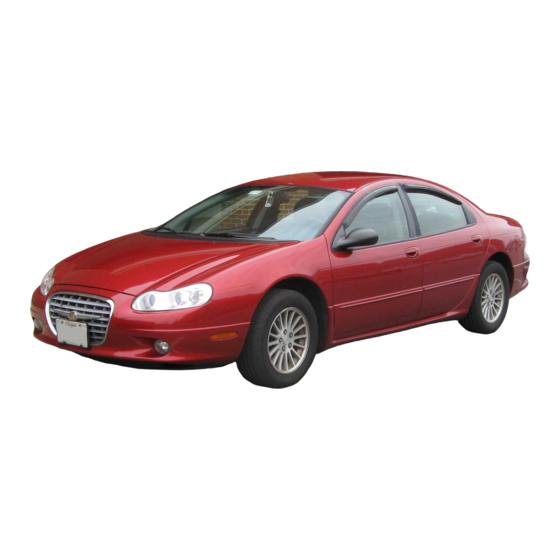
Table of Contents
Advertisement
Quick Links
CHRYSLER/DODGE
SERVICE MANUAL
2002
300M, CONCORDE
AND INTREPID
NO PART OF THIS PUBLICATION MAY BE
REPRODUCED,
STORED
IN
A
RETRIEVAL
SYSTEM, OR TRANSMITTED, IN ANY FORM OR
BY ANY MEANS, ELECTRONIC, MECHANICAL,
PHOTOCOPYING, RECORDING, OR OTHERWISE,
WITHOUT THE PRIOR WRITTEN PERMISSION
OF DAIMLERCHRYSLER CORPORATION.
DaimlerChrysler Corporation reserves the right to make changes in design or
to make additions to or improvements in its products without imposing any
obligations upon itself to install them on its products previously manufac-
tured.
Copyright © DaimlerChrysler Corporation
Advertisement
Chapters
Table of Contents

















Need help?
Do you have a question about the 300M 2002 and is the answer not in the manual?
Questions and answers
Paso a paso para desmontar la trasmisión de carro